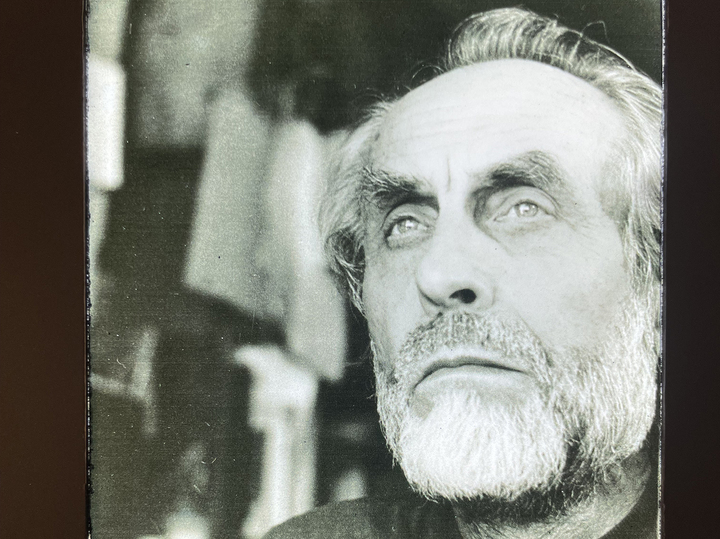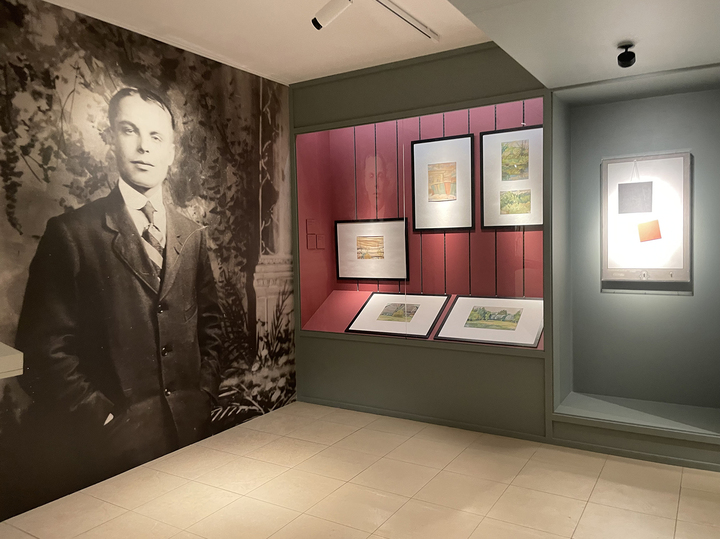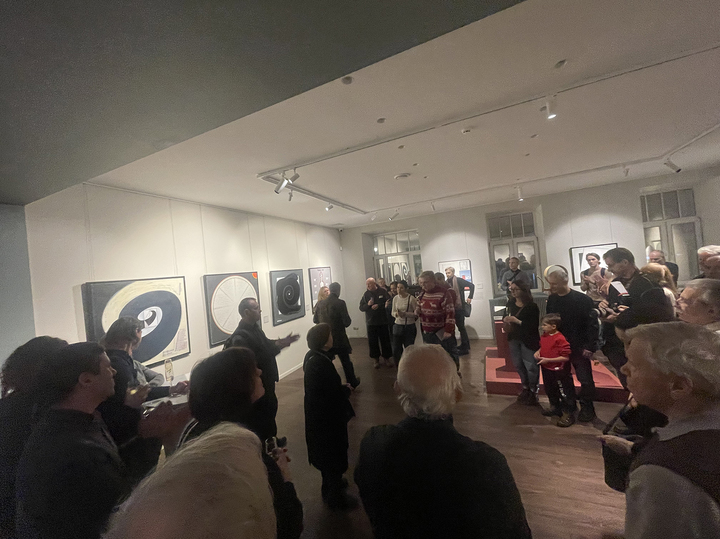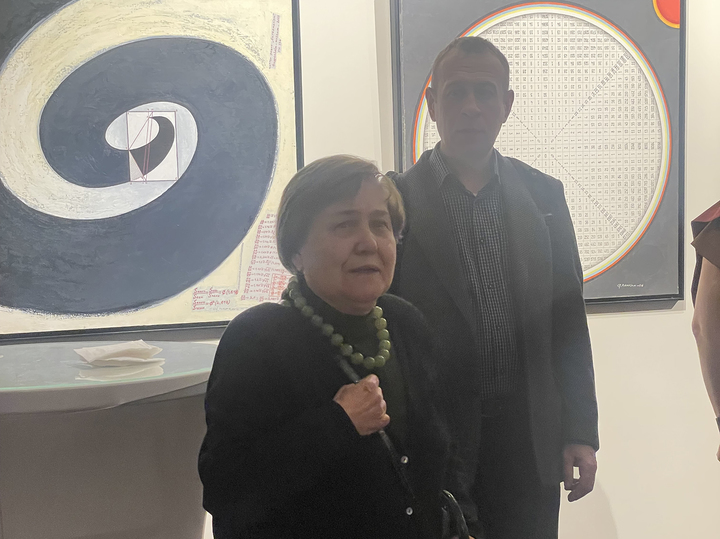Malevich’s “Black Square” turned out to be half white
[ad_1]
“The Secret Laboratory of the Artist” – this is the name given to the exhibition of Alexander Fedorovich Pankin, an artist who had an amazing “intuition of the mind”, “vision of thought” and, it seems, found a formula for harmony while exploring the Suprematism of Kazimir Malevich. Each of Pankin’s works is a study with complex mathematical calculations. On his canvases and in art objects, geometry and poetry, the golden ratio and subtle humor, romantic lightness and scientific accuracy are unexpectedly and logically combined. The artist’s family presented a project that shows the process and result of his search in the exhibition space of the Cheglakov Foundation three years after the master’s death.
Always friendly, modest, benevolent and delicate, Alexander Fedorovich Pankin resembled a professor from some other era, so I wanted to call him by his first name and patronymic. He followed the artistic life of Moscow with keen interest, and every meeting with him left a feeling of light and warmth. It seems that by deducing his artistic and mathematical forms, which, despite extreme clarity, he called “meta-abstractions” or “abstractions about abstractions,” he found universal harmony for himself personally. Alexander Fedorovich passed away in 2020, he was 83 years old. Since then, the family – son Dmitry, who followed in his father’s footsteps and became an artist, and wife Natalya – have been sorting through archives and works from more than half a century of creative life to show everything that was not revealed to the public during their lifetime. The result is an exhibition that is broader than Pankin’s philosophy; it shows where this amazing artist and man came from, and what he left for his descendants.

The exhibition opens with a portrait of Pankin’s father, Fyodor Alexandrovich, who painted thin, transparent watercolors on the verge of the real and the imaginary, and worked as a builder. Fyodor Pankin resembles the handsome Cillian Murphy in the image of gang leader Thomas Shelby from the TV series Peaky Blinders. It turns out that the similarity is not only external.

“Fyodor Aleksandrovich built all the buildings in Yegoryevsk, where our family lived until the 1980s,” says Dmitry Pankin. – In 1914, he graduated from the Electro-Mechanical School in Yegoryevsk, and in the 1920s he traveled to America for a project to build an automobile plant, which ultimately did not take place. But he has seen the world. Then in Yegoryevsk he built a bakery, a club named after Konin in the constructivist style and much more. Moreover, he often hired bandits whom no one wanted to hire. He somehow found a common language with them. Once a foreman was sent to them, and in the end they almost cut off his head with a shovel. Since then, only my grandfather came to an agreement with them; they defended him, our family, and the construction sites themselves. And there have never been any criminal incidents there. My grandfather painted from his youth, and it was he who gave my dad paints and brushes.

Alexander Fedorovich grew up in a creative, technical family of intellectuals, hardened by the harsh Soviet life. He had two brothers. The eldest, Helium, became the chief engineer at the space plant in Fryazino. The middle one, Yuri, worked as an engineer at the Machine Tool Construction Plant in Yegoryevsk. And Pankin Jr., Alexander, graduated from the Moscow Architectural Institute and almost immediately became the chief architect of Yegoryevsk. But he didn’t stop drawing for the soul. As a child, his father showed him reproductions of Cezanne, Matisse, and Derain, and this fascination with colors did not leave the young man, who was destined for a career as a big official. In the early 70s, he received a promotion – the post of deputy head in the Main Architectural and Planning Directorate of the Moscow Committee for Architecture and Architecture. Around the same time, Eliya Belyutina came to study at the New Reality studio – the same one that became famous for the exhibition in the Manege and which Nikita Khrushchev scolded.

Pankin began to create abstractions, collages, art objects, and assemblages. There he learned to think freely and intuitively. He produced talented works, but many of his contemporaries followed a similar path. A revolution in Alexander Fedorovich’s creative vision occurred in 1988, when the first exhibition of Kazimir Malevich was shown in St. Petersburg and Moscow. After decades of oblivion, Suprematism could be seen and analyzed, and Pankin took up this closely and with great enthusiasm. At this moment, a special style of the artist was born, which is more accurately called a method, and with it a new stage began in the fate of Alexander Fedorovich. He left his job and became a freelance artist. “Malevich came up with a formula – to create with an intuitive mind,” said Pankin, paving his own path in art in the same way.
One of Alexander Fedorovich’s important discoveries was the analysis of the “Black Square”: he established that the areas of black and white in the main work of Suprematism are equal. “The “black square” is binary – dual. Dividing in half is the beginning of everything, as Pythagoras said: yes – no, plus – minus, vowels – consonants, even and odd numbers. Binary is the law of all things,” Pankin once explained to the author of these lines, showing formulas with calculations. That is, this is what harmony consists of: there is equal amount of black and white, there is no less good than evil, and the most complex matters are at the same time the simplest. Pankin was sure that Malevich saw his geometric abstractions as alive, moving, and created several kinetic versions of the artist’s works of the early twentieth century. For example, the painting “Black Square and Red Square” (1915) was given movement so that the lower red square moves around the black corner “sun”. This version is now in the Russian Museum. And at the exhibition, at the very beginning of the project, next to the landscapes of Father Pankin, you can find a similar kinetic work, where a red square, like a clock pendulum, moves back and forth. This swing contains the same duality as in “Black Square”: the world is designed in such a way that it first leads in one direction, and then exactly in the opposite direction. Another unusual discovery is associated with Malevich’s work “Eight Rectangles”. Pankin calculated that they are not located chaotically, but are subject to the law of the “golden ratio”. And according to the same principle, nature itself “invents” the colors of many of its inhabitants, so the colors of the Ursa Dipper moth are built according to the same Fibonacci principle as Malevich’s geometric abstraction. Alexander Fedorovich compared them on his canvas, citing specific measurements and calculations.

Using various equations and formulas, Pankin analyzed many works by Malevich and other artists, as well as phenomena, objects and objects. He transferred his calculations to canvases: the numbers on them line up into a kind of science that is problematic for the average person, acquiring their own magic. It seems that Pankin, a kind of modern alchemist, unravels the secret of the world order in each of them. Those who are not strong in mathematics may not understand all the nuances, but every viewer feels that the author finds logic, symmetry and regularity in seemingly completely abstract and chaotic things. Here, for example, is Malevich’s famous work “The Red House”: several stripes of different colors depict a field, on it there is a simple house made of a black trapezoid and a red rectangle, and on top there is a blue square of the sky. Calculations show that the “golden ratio” formula also works here, and all figures and planes are multiple and interconnected. “In my artistic practice, numbers do not act as pictorial elements, but in a completely different context. Irrational, transcendental numbers, number series objectively, physically form an abstract composition, showing their “face” through the artist,” reads the description of the “Red House” calculations.

This dance of numbers contains the same binary that Alexander Pankin guessed in “Black Square”. No matter how much we try to unravel the mysteries of the Universe using logic and science alone, it doesn’t work. In the same way, pure fantasy alone cannot reveal the meaning of existence. Only an integrated approach works – intuitive and reasonable. It is also felt in the works of Alexander Fedorovich’s son, Dmitry, who, following his father, creates “abstractions about abstractions,” but without formulas. Here, soft shades and halftones “work”, which “highlight” the mood, emotion, and intuitive creation in geometric forms.
[ad_2]
Source link






